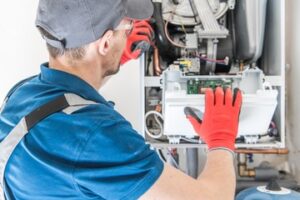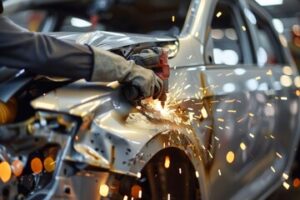A furnace plays a crucial role in maintaining a comfortable indoor environment, especially during colder months when maintaining warmth becomes essential. It is responsible for heating the air and distributing it throughout the building, ensuring that the indoor temperature remains comfortable and stable.

However, like any other mechanical system, a furnace can experience wear and tear over time, leading to decreased performance or even complete failure. When a furnace begins to show signs of malfunction, prompt repair and maintenance are necessary to prevent further issues and to ensure the system continues to operate efficiently. Furnace repair is not only about fixing immediate problems but also about extending the lifespan of the system and improving its overall performance. Contact Furnace Repair Orillia for professional help.
A malfunctioning furnace can lead to a range of issues, from uneven heating to increased energy costs. One of the most common signs that a furnace requires repair is inconsistent heating. When some rooms in the building are warmer than others, it may indicate a problem with the furnace’s blower motor, thermostat, or ductwork. Uneven heating can cause discomfort and force the system to work harder, which increases energy consumption and raises utility bills. In some cases, the furnace may fail to produce any heat at all, which can be due to a faulty ignition system, a malfunctioning thermostat, or problems with the fuel supply. Identifying the root cause of heating issues requires a thorough inspection of the furnace and its components.
Strange noises coming from the furnace are another indication that repair is needed. A well-functioning furnace should operate quietly, with minimal sound coming from the system. If loud banging, squealing, or rattling noises are present, it could signal a loose or broken component within the furnace. For example, a banging sound may indicate that the burner is dirty or that there is a delay in ignition, while a squealing noise may be due to a worn-out belt or motor bearing. Ignoring these sounds can lead to more severe damage, increasing the likelihood of a complete system breakdown. Addressing unusual noises promptly can prevent costly repairs and ensure that the furnace continues to function efficiently.
A furnace that cycles on and off frequently, known as short cycling, is another common issue that requires repair. Short cycling can be caused by an overheating system, a malfunctioning thermostat, or restricted airflow due to a clogged filter. When the furnace shuts down prematurely, it fails to complete the heating cycle, leading to inadequate heating and increased wear and tear on the system. Over time, short cycling can strain the furnace’s components and reduce its lifespan. Cleaning or replacing the air filter, checking the thermostat, and ensuring proper ventilation can help resolve short cycling issues and restore the furnace’s performance.
Poor air quality within the building can also be linked to furnace problems. A dirty or clogged furnace filter can allow dust, allergens, and other pollutants to circulate through the air, leading to respiratory issues and discomfort. In some cases, a malfunctioning furnace can produce carbon monoxide, a dangerous gas that can pose serious health risks if inhaled. Regularly replacing the furnace filter and inspecting the heat exchanger for cracks or leaks can help prevent poor indoor air quality and protect the health of the building’s occupants. Installing a carbon monoxide detector near the furnace can provide an added layer of protection and alert occupants to potential safety hazards.
Increased energy bills without a corresponding increase in heating demands can indicate that the furnace is operating inefficiently. A furnace that works harder to produce the same amount of heat consumes more energy, leading to higher utility costs. Dirty filters, clogged ducts, or a malfunctioning blower motor can all contribute to reduced efficiency. Scheduling regular maintenance and cleaning can help improve the furnace’s efficiency and reduce energy consumption. In some cases, upgrading to a more energy-efficient furnace model may be a cost-effective solution for reducing long-term energy expenses.
Preventative maintenance is one of the most effective ways to avoid furnace breakdowns and costly repairs. Annual inspections by a qualified technician can identify potential issues before they develop into major problems. During a maintenance visit, the technician will inspect the furnace’s components, clean the system, and test its performance to ensure that it is operating at peak efficiency. Replacing worn-out parts, tightening loose connections, and lubricating moving components can help prevent unexpected breakdowns and extend the lifespan of the furnace. Regular maintenance also ensures that the furnace meets safety standards and operates without producing harmful emissions.
A properly functioning thermostat is essential for maintaining consistent indoor temperatures and ensuring that the furnace operates efficiently. If the thermostat is not calibrated correctly or fails to communicate with the furnace, it can cause heating issues and energy waste. Upgrading to a programmable or smart thermostat allows for greater control over the heating schedule and can help reduce energy consumption. A programmable thermostat can be set to adjust the temperature based on the occupants’ schedules, ensuring that the building is heated only when necessary. This reduces strain on the furnace and lowers heating costs over time.
The age of the furnace is another factor that influences the need for repair. Most furnaces have a lifespan of 15 to 20 years, depending on the quality of the system and the level of maintenance it receives. Older furnaces are more prone to breakdowns and may operate less efficiently than newer models. If the cost of repairing an aging furnace exceeds the cost of replacing it, investing in a new system may be the better long-term solution. Modern furnaces are designed to be more energy-efficient and environmentally friendly, providing improved performance and lower operating costs. A professional technician can evaluate the condition of the furnace and recommend whether repair or replacement is the most cost-effective option.
Ensuring proper airflow is essential for the furnace to operate efficiently. Blocked vents, clogged filters, and dirty ducts can restrict airflow and cause the furnace to work harder to circulate heat throughout the building. Cleaning the ductwork and replacing filters regularly can help improve airflow and enhance the furnace’s performance. In some cases, installing additional vents or adjusting the layout of the duct system may be necessary to achieve balanced heating. Proper insulation also plays a role in maintaining indoor temperatures and reducing strain on the furnace. Sealing gaps around windows and doors helps prevent heat loss and ensures that the furnace does not have to compensate for drafts and temperature fluctuations.
Addressing minor furnace issues promptly can prevent more extensive damage and costly repairs. For example, a small leak in the heat exchanger can escalate into a major safety hazard if left unattended. Ignition problems, pilot light issues, and electrical malfunctions should also be addressed as soon as they are detected to prevent further damage to the system. Monitoring the furnace’s performance and paying attention to warning signs such as unusual noises, uneven heating, and increased energy bills can help identify potential problems early. Regular maintenance and timely repairs help preserve the furnace’s lifespan and ensure that it operates efficiently throughout its service life.
Choosing a qualified technician for furnace repair is crucial for ensuring that the system is properly diagnosed and repaired. A licensed and experienced technician will have the knowledge and tools necessary to identify the root cause of the problem and implement an effective solution. Attempting to repair a furnace without proper training can lead to further damage and safety hazards. Professional technicians are also familiar with building codes and safety regulations, ensuring that the furnace operates safely and complies with industry standards. Establishing a relationship with a trusted technician allows for consistent service and reliable maintenance over time.
Furnace repair and maintenance are essential for ensuring a comfortable indoor environment, improving energy efficiency, and protecting the safety of the building’s occupants. A well-maintained furnace provides consistent heating, reduces energy costs, and minimizes the risk of breakdowns and safety hazards. Regular inspections, prompt repairs, and proper airflow management all contribute to the furnace’s long-term performance and reliability. Investing in preventative maintenance and professional repair services ensures that the furnace continues to operate efficiently and effectively, providing warmth and comfort for years to come.
4o



